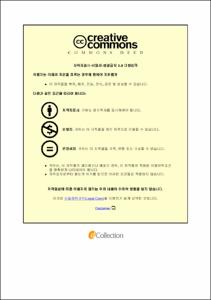Numerical Study on the Evaluation of Lubrication Performance of Journal Bearing
- Alternative Title
- 수치해석에 의한 저널 베어링 윤활 성능평가
- Abstract
- A bearing is a mechanical element that supports shaft loads and assists in rotating the machine that cannot be excluded while discussing mechanical devices. Among them, journal bearings are used for high loads or high speed rotating motions due to their large area under loads and small friction coefficients. In the lubrication analysis of bearings, it is common to use Reynolds equation, which takes into account the low Reynolds number that can ignore the inertial terms compared to the viscous terms. However, as the eccentricity increases with higher loads and higher speeds, the flow becomes more complex, and for flows with high Reynolds number, it is necessary to simultaneously introduce the turbulence model and Navier-Stokes equation to calculate the viscosity flow.
In this study, we analyze various factors affecting the bearing lubrication such as the lubrication temperature (50 ℃ , 100 ℃ , 150 ℃ , 180 ℃ , 200 ℃ ), the shape of the bearing (considering the dimple structure), the rotational speed (1000 RPM, 2000 RPM, 3000 RPM, 4000 RPM, 5000 RPM), and the eccentricity (0.6, 0.8 and 0.9). The elements that can determine bearing performance – such as pressure distribution of bearing parts, attitude angle according to the load on the shaft and volume fraction of lubricants in the gas state – were checked and compared according to Korea Standard (KS). The results showed that when the eccentricity and the rotational speed is increased and the lubricant temperature is lowered, the pressure on the bearings are increased. The results also matched well with the experimental results. By introducing the dimple structure on the bearing, the performance is improved when compared to that of the plain bearing. The dimple structure reduces the contact area between the shaft and the bearing, and the volume fraction reduction prevents erosion inside the bearing due to cavitation.
- Issued Date
- 2020
- Awarded Date
- 2020. 8
- Type
- Dissertation
- Keyword
- Journal Bearing Lubricant CFD
- Publisher
- 부경대학교
- Alternative Author(s)
- 김경환
- Affiliation
- 부경대학교 대학원
- Department
- 대학원 기계설계공학과
- Advisor
- 이연원
- Table Of Contents
- Chapter 1 1
1. Introduction 1
1.1. Research background 1
1.2. Literature review 2
1.3. Research purpose 7
Chapter 2 8
2. Comparative evaluation of basic theory and KS standard 8
2.1. CFD technique 8
2.2. Governing equations and turbulence model 9
2.2.1. Statistical turbulence models and the closure problem 10
2.2.2. Reynolds Averaged Navier Stokes (RANS) equations 11
2.2.3. Eddy viscosity turbulence models 13
2.2.4. K-ω model in CFX 15
2.2.4.1. Wilcox k-ω model 16
2.3. Journal bearing basic theory and design according to KS standard 18
2.3.1. Journal bearing basic theory 18
2.3.2. Journal bearing design according to KS standard 24
Chapter 3 32
3. Numerical Analysis 32
3.1. Numerical analysis modeling 32
3.1.1. Grid dependency test 35
3.1.2. Validation 38
3.2. Computational flow analysis according to viscosity change 40
3.2.1. Flow field analysis 44
3.2.1.1. Pressure field 44
3.2.1.2. Volume fraction of gaseous lubricant 49
3.2.2. Comparison of force and attitude angle 53
3.3. Computational flow analysis based on rotational speed 54
3.3.1. Flow field analysis 54
3.3.1.1. Pressure field 54
3.3.1.2. Volume fraction of gaseous lubricant 59
3.3.2. Comparison of force and attitude angle 62
3.4. Introduction of dimple structure to investigate bearing performance 63
3.4.1. Assessment of dimple effect 64
3.4.2. Effect of change of dimple parameters 67
4. Conclusions 72
5. References 74
- Degree
- Master
- Files in This Item:
-
-
Download
 Numerical Study on the Evaluation of Lubrication Performance of Journal Bearing.pdf
기타 데이터 / 3.53 MB / Adobe PDF
Numerical Study on the Evaluation of Lubrication Performance of Journal Bearing.pdf
기타 데이터 / 3.53 MB / Adobe PDF
-
Items in Repository are protected by copyright, with all rights reserved, unless otherwise indicated.